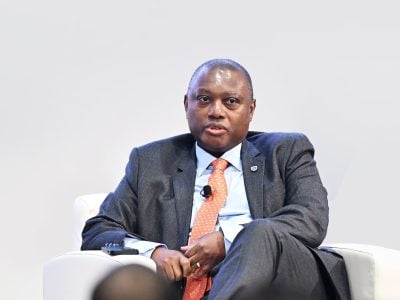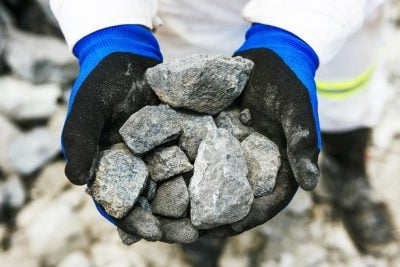As African leaders prepare for the 7th African Union–European Union Summit in Luanda on 24–25 November 2025, they should reassess the continent’s trade and aid relationship with the EU in light of persistent structural imbalances. More than sixty years after the formal end of colonial rule, Africa’s trade profile with Europe remains highly extractive and minimally transformative, dominated by raw material exports rather than diversified, higher value‑added goods.
The first AU–EU summit, held in Cairo in 2000, promised a partnership based on equality, mutual respect and shared prosperity, yet Africa’s economic diversification has advanced only marginally. According to Eurostat, between 2022 and 2024 minerals and fuels made up 53% of Africa’s exports to the EU (€194bn), led by Algeria, Nigeria, Libya, Angola and Egypt. Vehicles and parts (6%), electrical machinery (5%), cocoa products (3%), apparel (3%) and other items such as gems, fertilisers, iron and steel together accounted for only about 7% of exports.
Colonial-era trade patterns linger
This pattern mirrors the economic geography shaped in the colonial era, when infrastructure and trade routes were designed to move unprocessed resources from Africa’s interior to European markets. It also sits uneasily with the AU’s Agenda 2063, which prioritises industrialisation, value addition and economic diversification. A key question for the summit, therefore, is whether current AU–EU trade agreements and EU “Aid for Trade” are helping to change this profile or locking it in.
The 1975 Lomé Convention was the first major trade and aid agreement between the European Community (now the EU) and African, Caribbean and Pacific (ACP) states, later replaced by the Cotonou Agreement in 2000. Both offered non‑reciprocal preferences to ACP exports. After Cotonou expired, the EU moved to a differentiated approach: least developed countries (LDCs) receive unilateral preferences through the Everything But Arms (EBA) scheme, while non‑LDCs are expected to conclude reciprocal Economic Partnership Agreements (EPAs) consistent with WTO rules. Although WTO disciplines allow flexibility in such agreements – longer transition periods, partial product coverage and more flexible rules of origin – the EU has often used this room in ways that are unfavorable for Africa’s non‑LDCs.
Across Africa, the EPA experience has been concerning. Under pressure to avoid loss of EU market access, Ghana, Côte d’Ivoire, Botswana, Namibia, Eswatini and Kenya ratified EPAs with demanding tariff‑liberalisation schedules on EU imports. In Ghana, analysts argue that the government effectively capitulated to far‑reaching EU demands partly because negotiations coincided with the 10th European Development Fund, during which Ghana received €373.6m in budget support. In the East African Community, Kenya’s bilateral EPA has undermined the Common External Tariff: it agreed to a 25% tariff on EU wines and spirits, below the EAC CET rate of 35% intended to protect local producers. Other signatories with similarly demanding terms include Cameroon, Comoros, Madagascar, Mauritius, Mozambique, Lesotho, Seychelles, South Africa and Zimbabwe.
Several African non‑LDCs remain outside EPAs, including Algeria, Cabo Verde, Republic of Congo, Egypt, Equatorial Guinea, Gabon, Libya, Morocco, Nigeria, São Tomé and Príncipe, South Sudan and Tunisia. Nigeria, in particular, resisted EU pressure and declined to sign because the EU sought extensive tariff liberalisation despite Nigeria offering a five‑year tax holiday to foreign investors to encourage domestic production. Nigeria’s plan was to phase out tariffs gradually while maintaining tax incentives, so EU firms would invest in local manufacturing and move down the value chain instead of perpetuating raw‑material exports. EU insistence on far‑reaching liberalisation risked reinforcing the colonial pattern: Nigeria exports raw commodities to the EU for processing and then imports finished products back.
Value chains must reflect Africa’s priorities
Aid policy shows similar tensions. The EU presents itself as the world’s leading provider of “Aid for Trade”, and Africa receives the largest share of this support. Yet the EU’s own progress report indicates that most funds go to trade‑related infrastructure – customs reform, ports, corridors and logistics – rather than targeted value‑chain development. Meanwhile, the EU’s Global Gateway initiative, which aims for significant investments in Africa, largely focuses on large‑scale infrastructure in energy, transport and digital connectivity. Critics argue these projects are geostrategic responses aimed at reducing EU dependence on Chinese minerals and Russian gas by securing access to African raw materials, rather than systematically building African industrial capacities.
Infrastructure is necessary but not sufficient to transform Africa’s export profile. Much of the continent’s legacy infrastructure was designed in colonial times to move unprocessed resources from mines and plantations to ports. Current aid that concentrates on infrastructure, without parallel investment in processing and upgrading, risks mimicking that model.
The last AU–EU summit declaration pledged support for regional and continental integration and described trade agreements as instruments to deepen trade, foster development and achieve mutually beneficial integration of both continents’ markets. To honour these commitments, the EU should accept African tariff‑liberalisation schedules under EPAs where they are clearly calibrated to promote local production and economic diversification. It should also move beyond a generic focus on “connectivity” and “hard infrastructure” and align its aid more closely with sector‑specific value‑chain strategies in agriculture, manufacturing and services that reflect Africa’s own priorities and the realities of Agenda 2063.
African leaders should use leverage
This requires changing how aid is designed. Too often, EU aid frameworks are drafted in Brussels or other European capitals, with African governments treated as implementers rather than co‑architects. In today’s context – where Africa is a competitive destination for trade and investment from China, Turkey, Gulf states and others – African leaders have more leverage to insist that aid and EPAs support higher value‑added exports instead of raw‑material dependence. Progress should be measured less by export volumes and more by the degree of value addition generated within African economies.
As the 7th AU–EU Summit convenes in Luanda, African leaders should deliver a clear and unified message: Europe’s aid to Africa and its EPAs must move beyond merely securing access to African markets and resources and instead enable African ownership of value creation on the continent. If the EU fails to adapt to Africa’s competitive rise and to the ambitions embodied in the African Continental Free Trade Area and Agenda 2063, it risks losing influence and market share in a region that is its closest neighbour.
Want to continue reading? Subscribe today.
You've read all your free articles for this month! Subscribe now to enjoy full access to our content.
Digital Monthly
£8.00 / month
Receive full unlimited access to our articles, opinions, podcasts and more.
Digital Yearly
£70.00 / year
Our best value offer - save £26 and gain access to all of our digital content for an entire year!

 Sign in with Google
Sign in with Google 



